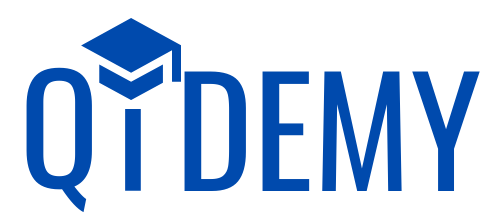Quality assurance and quality control are two important concepts in business and industry that are often used interchangeably, but they are not the same thing.
Quality assurance refers to the process of ensuring that a product or service meets the required standards and specifications, while quality control focuses on the actual inspection of the product or service to ensure that it meets these standards.
In this blog, we will explore the key differences between quality assurance and quality control, their respective goals and objectives, and why they are both important in the business and industry.
Whether you are a business owner, manager, or employee, it is essential to understand the differences between quality assurance and quality control and how they can help improve the overall quality of your products and services.
So, let’s dive in and understand the key differences between these two important concepts.
Table of Contents
What is Quality Assurance?
Quality Assurance (QA) is a systematic and ongoing process that helps to ensure the quality of a product or service meets the required standards and specifications.
It is a proactive approach that aims to prevent defects and issues from arising in the first place. QA focuses on the processes, systems, and procedures that are in place to produce the product or service, with the goal of eliminating any potential sources of defects or issues.
In other words, quality assurance is a preventative measure that helps to ensure the quality of a product or service by implementing standards, procedures, and best practices to ensure that the product or service is produced consistently and to the required specifications.

Objectives and Goals of Quality Assurance
The primary objective of QA is to prevent defects and issues from arising in the first place and to ensure that the product or service being produced is of high quality and meets the required standards and specifications.
The goals of QA include improving the overall quality of the product or service, reducing the number of defects and issues, and increasing customer satisfaction.
Key Factors and Considerations
The key factors and considerations in QA include implementing and following standardized processes, procedures, and best practices; regularly testing and evaluating the product or service to ensure it meets the required standards; and having a system in place for identifying, tracking, and resolving any defects or issues that may arise.
Best Practices for Quality Assurance
Some best practices for Quality Assurance include conducting regular quality checks and inspections, conducting regular training sessions for employees to ensure they are following the correct processes and procedures, and regularly reviewing and updating the QA processes to ensure they are effective and efficient.
Additionally, involving customers and stakeholders in the QA process can provide valuable feedback and help to ensure that the product or service meets their needs and expectations.
What is Quality Control?
Quality Control (QC) is a process that involves the inspection and testing of a product or service to ensure that it meets the required standards and specifications. It is a reactive approach that focuses on detecting and correcting defects and issues after they have arisen.

Objectives and Goals of Quality Control
The primary objective of QC is to identify and rectify any defects or issues in the product or service, ensuring that the final product meets the required standards and specifications.
The goals of QC include reducing the number of defects and issues, improving the overall quality of the product or service, and increasing customer satisfaction.
Key Factors and Considerations
The key factors and considerations in QC include having a system in place for inspecting and testing the product or service, regularly reviewing and updating the QC processes to ensure they are effective and efficient, and having a system in place for tracking and resolving any defects or issues that may arise.
Best Practices for Quality Control
Some best practices for Quality Control include conducting regular quality checks and inspections, having a clear and defined process for rectifying defects and issues, and involving customers and stakeholders in the QC process to ensure that the product or service meets their needs and expectations. Additionally, conducting regular training sessions for employees on the correct inspection and testing processes can help to ensure that the product or service is of high quality and meets the required standards.
Key Differences and Comparisons
Quality Assurance (QA) is a proactive process that aims to prevent defects and issues from arising in the first place, while Quality Control (QC) is a reactive process that focuses on identifying and correcting defects and issues after they have arisen.
- QA is focused on the processes and systems used to produce a product or service, while QC is focused on the inspection and testing of the product or service.
- QA is a preventative measure aimed at ensuring the quality of the product or service, while QC is a corrective measure aimed at rectifying any defects or issues that may arise.
- QA is a continuous process that occurs throughout the production process, while QC is a more specific and defined process that occurs at specific points in the production process.
| Quality Assurance (QA) | Quality Control (QC) |
| Focuses on the overall process of creating a product or service | Focuses on the inspection of the final product |
| Aim is to improve the development process and ensure that the end product meets the requirements | Aim is to identify and correct defects in the final product |
| Involves defining and documenting requirements, creating a development plan, and testing and validation | Involves testing, inspection, and monitoring the final product |
| Helps to prevent defects from occurring | Helps to identify and correct defects after they have occurred |
| Emphasizes the importance of doing things right the first time | Emphasizes the importance of catching and correcting defects |
Example of difference between quality assurance and quality control ?
Software Industry Example
A software development company is building a new product for its customers.
Quality assurance activities in this scenario might include:
- Defining and documenting the software requirements
- Creating a software development plan that includes processes for testing and validation
- Regularly reviewing and improving the development process to ensure that the end product will meet the requirements
Quality control activities in this scenario might include:
- Testing the software at various stages of development to identify and fix any defects or deviations from the requirements
- Conducting a final inspection before releasing the software to ensure it meets the specified quality standards
- Monitoring the software after release to identify and address any issues or problems that arise.
In this example, the QA activities help to ensure that the software development process is efficient and effective, while the QC activities help to catch and correct any defects that might have been missed during the development process.
Manufacturing Industry Example
Here’s an example to illustrate the difference between Quality Assurance (QA) and Quality Control (QC) in manufacturing:
A company is manufacturing a batch of widget parts for its customers.
Quality assurance activities in this scenario might include:
- Defining the specifications and requirements for the widget parts
- Establishing a production process that includes steps for checking and verifying that each part meets the specifications
- Regularly reviewing and improving the production process to ensure that the end product meets the requirements
Quality control activities in this scenario might include:
- Inspecting a sample of the widget parts at various stages of production to ensure they meet the specifications
- Conducting final inspections of the completed batch of parts before shipping to the customer to ensure that all parts meet the quality standards
- Monitoring customer feedback and complaints to identify any issues with the quality of the parts and make necessary improvements
In this example, the QA activities help to ensure that the production process is efficient and effective, while the QC activities help to catch and correct any defects that might have been missed during the production process.
Significance and Importance Quality Assurance and Quality Control
Both Quality Assurance and Quality Control are important for ensuring the quality of a product or service. QA is important for preventing defects and issues from arising, while QC is important for identifying and rectifying any defects or issues that may arise. Both QA and QC are critical for improving the overall quality of the product or service, increasing customer satisfaction, and building a strong and reliable brand reputation.
Benefits and Advantages of QA and QC
The implementation of Quality Assurance and Quality Control processes can bring numerous benefits and advantages to an organization, including:
- Improved product and service quality: By ensuring that products and services meet the required standards and specifications, the overall quality of the product and service is improved, leading to increased customer satisfaction and a stronger brand reputation.
- Increased efficiency and productivity: By identifying and rectifying defects and issues early on in the production process, organizations can save time and resources that would have otherwise been spent on fixing issues later in the process.
- Reduced costs: By preventing defects and issues from arising, organizations can reduce costs associated with fixing defects and rework, which can be significant.
- Improved customer satisfaction and loyalty: Providing a high-quality product or service can help to increase customer satisfaction and loyalty, leading to increased repeat business and positive word-of-mouth marketing.
Quality Assurance and Quality Control are critical in any industry that involves the production of a product or service. From manufacturing to software development to healthcare, organizations that prioritize quality can gain a competitive edge and build a strong reputation for delivering high-quality products and services. Additionally, in regulated industries, such as the food and beverage industry or the pharmaceutical industry, strict quality control processes are often required by law to ensure the safety and efficacy of the products being produced.
Conclusion
Quality Assurance and Quality Control are critical processes for ensuring the quality of a product or service. Quality Assurance is a proactive process that aims to prevent defects and issues from arising, while Quality Control is a reactive process that focuses on identifying and correcting defects and issues after they have arisen. Both processes are important for improving the overall quality of the product or service, increasing customer satisfaction, and building a strong and reliable brand reputation.
In conclusion, organizations should prioritize Quality Assurance and Quality Control processes in order to ensure the production of high-quality products and services. These processes can bring numerous benefits and advantages, including improved product and service quality, increased efficiency and productivity, reduced costs, and improved customer satisfaction and loyalty.
FAQ
Which comes first QA or QC?
Typically, quality assurance (QA) comes before quality control (QC) in the product development process.
QA focuses on ensuring that the process for creating the product is efficient and effective and meets the required quality standards. This might include defining requirements, creating a development plan, and establishing processes for testing and validation.
Once the product has been created, QC activities are performed to inspect the final product and ensure it meets the specified quality standards. This might include testing, inspection, and monitoring of the product after release.
In this sense, QA sets the stage for successful quality control by establishing a strong foundation of processes and requirements that the final product must meet.
Can QC be achieved without QA?
It is possible to perform quality control (QC) without implementing a formal quality assurance (QA) program, but it is not recommended.
QC focuses on inspecting the final product to ensure it meets the specified quality standards, but it does not address the underlying processes that led to the creation of the product. Without a QA program, it may be more difficult to identify and address issues with the development process, leading to a higher likelihood of producing products that do not meet the required quality standards.
A comprehensive QA program, on the other hand, establishes processes and standards for the development of the product, and can help to improve the overall efficiency and effectiveness of the development process. This, in turn, increases the chances of producing a product that meets the quality standards and reduces the need for extensive QC efforts.
Therefore, while it is possible to perform QC without QA, implementing both QA and QC together can result in a more effective and efficient quality management system.
Role of Quality assurance and Quality Control in Total Quality Management
Quality Assurance (QA) and Quality Control (QC) play critical roles in Total Quality Management (TQM), which is a customer-focused approach to quality management that involves all employees in the organization.
The role of QA in TQM is to ensure that the processes used to develop and deliver products and services are consistent and effective. This involves defining and documenting requirements, creating a development plan, and conducting testing and validation to ensure that the end product meets the customer’s expectations.
The role of QC in TQM is to inspect and monitor the final product to ensure that it meets the quality standards established by the QA process. This involves testing, inspection, and monitoring the product to identify and correct any defects that may have been missed during the development process.
Both QA and QC are essential components of TQM, as they work together to ensure the overall quality of the product. By combining the efforts of QA and QC, TQM helps to improve the efficiency and effectiveness of the development process, reduce the occurrence of defects, and increase customer satisfaction.
In summary, QA and QC play critical roles in TQM by ensuring the quality of the end product and the processes used to develop and deliver it. Together, they form an integrated approach to quality management that helps organizations to achieve higher levels of quality and customer satisfaction.
Glossary
Explanation of Technical Terms and Jargons
- Quality Assurance (QA): A proactive process aimed at preventing defects and issues from arising.
- Quality Control (QC): A reactive process aimed at identifying and correcting defects and issues after they have arisen.
References
- ISO 9000:2015 Quality Management Systems – Fundamentals and Vocabulary (International Organization for Standardization, 2015)
- Total Quality Management (TQM): A Comprehensive Guide (ASQ, n.d.)
- Quality Control and Quality Assurance in Construction (ConstructConnect, 2019)
- ASQ




